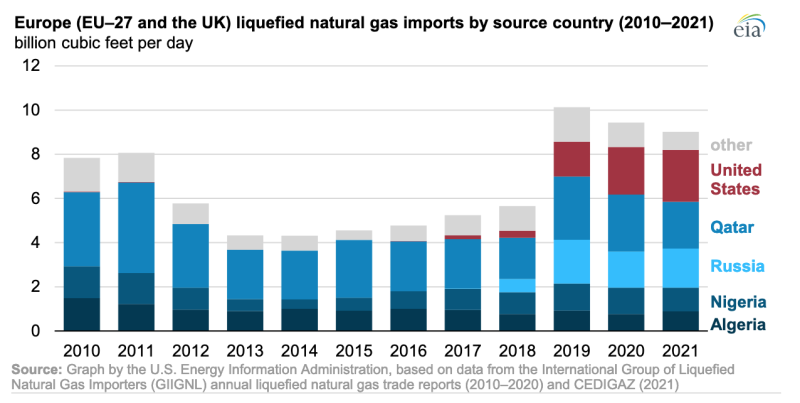QatarEnergy has tapped UK supermajor Shell as its fifth and final international partner in the North Field East (NFE) expansion, the LNG industry’s largest single project to date, and Qatar’s best bet to regain dominance among global liquefied natural gas (LNG) producers.
With its selection, announced at a 5 July ceremony in Doha, Shell joins France’s TotalEnergies, Italy’s Eni, and US majors ExxonMobil and ConocoPhillips in the consortium that will develop the NFE expansion.
Phase 1 envisions four new mega LNG trains with a combined nameplate capacity of 32 mpta to boost production initially by 43% to 110 mtpa from the current 77 mtpa. Two more trains will be added during Phase 2 (known as the North Field South) development) to reach a final targeted production of 126 mtpa (up 64%) by 2027, according to QatarEnergy’s current plan.
Under the agreement, Shell will partner with QatarEnergy in a new joint venture company (JV) in which Shell holds a 25% interest and QatarEnergy holds 75%. The JV in turn will own 25% of the entire NFE project, as is the case with each of QatarEnergy’s other four partners.
Shell will hold a 6.25% stake in the NFE expansion, the same as TotalEnergies and Exxon which will hold 6.25% stakes, Qatar’s Energy Minister and QatarEnergy CEO Saad Sherida al-Kaabi told reporters at the signing ceremony.
Eni and ConocoPhillips will each hold 3.12%.
NFE Consortium Complete With Shell’s Addition
“Today’s announcement marks the successful conclusion of the selection of our international energy company partners in the North Field East project,” Al-Kaabi said. “We value our long and fruitful relations and strategic partnership with Shell, not just within the State of Qatar, but in many other locations around the world.
“And, as one of the largest players in the LNG business, (Shell has) a lot to bring to help meet global energy demand and security,” the minister said.
Shell CEO Ben van Beurden praised the NFE as “a landmark project (that) will help provide the LNG (that) the world urgently needs at a lower-carbon footprint,” pointing out that the project is “pioneering integration with carbon capture and storage” to accomplish that goal.
Van Beurden also noted that Shell has “multiple international partnerships” with Qatar, including the “world-class Pearl gas-to-liquids (GTL) asset” which shipped its first product in 2011 and remains today the world’s largest GTL plant.
Shell also holds 30% in QatarGas 4 which includes assets across the value chain from offshore upstream gas production to downstream liquefication as well as a fleet of LNG carriers.
Confirmation of Shell’s participation in Qatar’s radical ramp up of its LNG production comes at a time that the UK supermajor is being squeezed out of the Sakhalin-2 LNG project in the Russian Far East and Europe is hunting contracts to replace Russian gas resources.

Responding to reporters’ questions in Doha, van Beurden said Shell was still studying the decree signed last week by Russian President Vladimir Putin directing the Russian government to seize control of Sakhalin-2 which supplies half of Japan’s LNG imports.
Shell had been negotiating to sell its stake in Sakhalin-2 after having indicated months ago that it would leave Russia because of the conflict in Ukraine. The government takeover, however, is likely to preempt those negotiations, resulting in the sale of Shell’s shares to a Russian buyer and the dilution of any proceeds.
Van Beurden told reporters it was too early to discuss specific plans to compensate for any loss from Sakhalin but given Shell’s 64 mtpa LNG production globally, the company would have options to effectively manage any changes to its portfolio changes.
"We have multiple supply points for multiple destinations,” Reuters quoted van Beurden as saying. “We optimize this to great effect. We can take some of these risks on our own books. As to whether we will need to use this in the case of Sakhalin Energy, that remains to be seen.”



